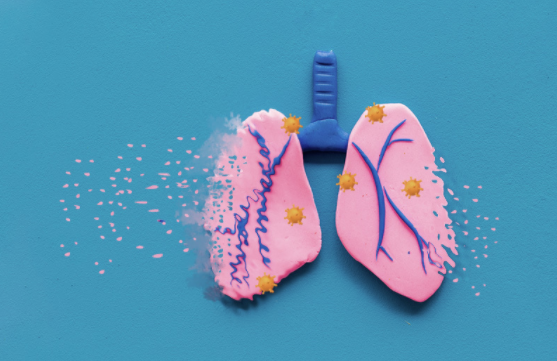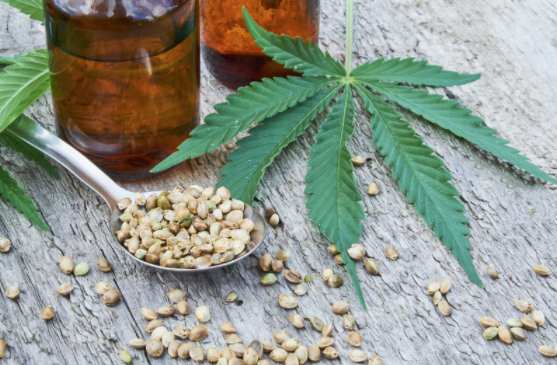COVID-19 Update July 18, 2020
- icshealthsciencejournal

- Jul 18, 2020
- 5 min read
This article contains:
Can Interferons Fight Against the Coronavirus?
Cytokine Storm
Can Interferons Fight Against the Coronavirus?
Written By: Paphapin Pairojtanachai
Decades ago, interferons have been accepted by the US Food and Drug Administration (FDA) as a powerful substance that boosts the immune system against various diseases such as cancer and hepatitis. Due to this fact, ever since the coronavirus pandemic began in the beginning of the year, there have been dozens of clinical trials testing the power of interferons — the body’s natural viral defenses — against the COVID-19. These trials deployed synthetic interferons through nose drops, inhalation, or injection in patients who have been infected only for a short time and in those uninfected with the coronavirus.
Up until now, there are still no drugs that have received complete confirmation of the ability to protect individuals from getting infected with the COVID-19 or to help infected individuals to fight off the coronavirus before the effects become serious. Only remdesivir and dexamethasone have been approved as valid medications for the COVID-19, yet they are only effective when administered to severely ill, hospitalized patients. Several research papers, nonetheless, suggest that the SARS-CoV-2 takes hold of the body by damaging interferons, which are considered to be the “frontline defenders against viral invasion.” Moreover, recent evidence has shown that type III interferon, also known as interferon lambda, can battle against the virus and limit inflammation. This led many scientists to support the hypothesis that giving synthesized interferons to individuals before or not long after they get infected by the virus would prevent it from bringing about harmful effects.
This is evident in the discovery made by Benjamin Terrier, an immunologist at the Cochin Hospital in Paris. After collecting data from the blood of 50 COVID-19 patients, he found that in critically ill patients, there was a “strikingly depressed interferon activity” but an upsurge in the production of chemokines, which are molecular messengers that stimulate inflammation. This outcome was not found in mildly ill patients. This is because after interferons have been disabled by the SARS-CoV-2, the virus promotes the production of chemokines. Ultimately, it means that without interferons, there is a higher chance that patients will exhibit extreme symptoms.
Presently, Stanford Medicine is conducting a clinical trial by injecting interferons into COVID-19 patients within three days of testing positive as well as into those who are suspected to have been exposed to the coronavirus. Not only that, but there are also many other medical institutes currently running tests, and the first results are expected to be released in August.
The reason why interferons have to be given to individuals before or early in the course of infection is that timing is very crucial when it comes to interferon production. According to a research project done by Ivan Zanoni, PhD, an immunologist at Boston Children’s Hospital, and his team, the novel coronavirus “inhibits interferon production in the upper airways.” Once the virus gets into the lower airways, however, type III interferons could potentially worsen the situation as they hinder the lungs from maintaining their protective barrier. This would then heighten the risk of bacterial “superinfections” in the lungs. Hence, if interferons are to be utilized, healthcare workers should inhibit the signaling cascades of interferons by using anti-inflammatory drugs once inflammation flares up in the lower airways.
Even so, among the promising ongoing studies, there are still plenty of challenges to overcome concerning the usage of interferons. For instance, other researchers have pointed out that low levels of interferons might not be the cause, but instead the consequence of severe COVID-19 infection. Other findings hint that interferons may not even be suppressed by the coronavirus at all.
Furthermore, Eleanor Fish, an immunologist at the University of Toronto, has reported that giving type I interferons to COVID-19 patients clears the virus away a week faster than type III interferons. Still, type III interferons could be more preferable since they give off fewer side effects including headache, fatigue, vomiting, and depression.
As scientists are still debating on this topic, it cannot be known whether those patients who underwent the clinical trials for interferons and have recovered received a placebo or interferons as their treatment.
Cytokine Storm
By: Tawan Petpaiboon
Cytokine storm is a condition that comes with the viral disease, COVID-19. It is caused by the inflammatory response of an individual’s body to the virus in which the body releases an excessive amount of cytokine. Cytokine is a pro-inflammatory substance produced by the white blood cells. Because of the sudden increase in cytokine levels, this may be destructive to the body; for example, it could cause capillary damage as well as collapse of organs’ functions. For instance, it may cause injuries in the lungs. Furthermore, the injuries in the lungs could be precursors of ARDS (Acute Respiratory Distress Syndrome), which is considered to be one of the factors of the deaths of COVID-19-infected patients. Fortunately, scientists have observed a possible cure for ARDS.
Scientists have discovered that CBD or Cannabidiol can help a patient recover from ARDS. They have experimented by using a simulation of ARDS in mice models. After that, they used CBD to cure the mice. The results showed that CBD contributed to the enhancement of oxygen levels as well as the decrease in cytokine levels. In addition, the lungs also recovered. This therapy has thus shown success in curing ARDS.
An alternate choice for CBD is CS, or corticosteroids. CS can be used in the late stages of COVID-19, in which the ARDS cases are severe. However, if it is used in the early stages, it can negatively affect the patient. For example, it can cause more bacterial infections. Therefore, it is still debated as to whether or not CS is beneficial. Other choices include chloroquine (CQ) and hydroxychloroquine (HCQ). These two substances can inhibit the endocytosis of the coronavirus, reduce cytokine levels, and decrease the expression of the virus. Unfortunately, this choice still holds a consequence: ventricular arrhythmias, a condition in which the heart beats too quickly, could be a side effect. As a result, this choice is also not recommended.
Although a complete cure for cytokine storm might have not been found, scientists are planning on finding ways to accomplish several goals including, but not limited to, the following: inhibition of C-C Chemokine Receptor Type 5, mesenchymal stem cells, and convalescent plasma therapy. The inhibition of C-C chemokine receptor type 5 is based on the idea that the receptors on white blood cells can cause inflammatory responses. Another way is the usage of mesenchymal stem cells, which results have shown from in vivo experiments that they can prevent and decrease damages to the lungs. The third way is convalescent plasma therapy. In this method, the antibodies of recovered patients are extracted from their blood. This method has been proven to be helpful in curing COVID-19, so it is expected to be beneficial in reducing the effects of cytokine storm as well.









Comments